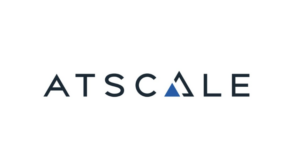
AtScale’s Latest Report Sheds Light on Microsoft’s Fabric Platform Suitability for Enterprise Workloads
BOSTON, Jan. 30, 2024 — AtScale, a leading provider of semantic layer solutions for analytics and Generative AI, published important new insights into the capabilities of Power BI and Microsoft Fabric in handling large-scale data. The results of this comprehensive study using the TPC-DS benchmarking standard, now accessible to the public, shed light on Microsoft’s Fabric platform and its suitability for enterprise workloads.
 In this extensive benchmarking study, the authors meticulously explored the capabilities of Power BI’s new Direct Lake connection to Microsoft’s OneLake platform across a spectrum of data sizes, ranging from 100 gigabytes to 10 terabytes, under light to heavy user concurrency.
In this extensive benchmarking study, the authors meticulously explored the capabilities of Power BI’s new Direct Lake connection to Microsoft’s OneLake platform across a spectrum of data sizes, ranging from 100 gigabytes to 10 terabytes, under light to heavy user concurrency.
The need for robust and scalable Business Intelligence (BI) tools is critical for all organizations, and Power BI, a leader in this space, has garnered significant interest from organizations seeking to maximize its capabilities. The introduction of Microsoft’s Direct Lake architecture on Fabric has opened new frontiers in this regard.
The benchmarking study documents the following key insights:
- The Power BI/Direct Lake connectivity to Microsoft Fabric behaves like a “lazy load” import alternative with all the same drawbacks and limitations as Power BI Import Mode. This makes it an inadequate replacement for live data queries.
- Power BI/Direct Lake delivered exceptional performance on small data but struggled to scale as the data size and user concurrency increased. When faced with larger data, Power BI Direct Lake triggered a fallback to DirectQuery mode, which slowed performance dramatically and caused extensive query timeouts.
- Power BI/Direct Lake’s web modeling tool is missing critical features for handling enterprise data models and is poorly suited for multi-user collaboration.
- Microsoft Fabric Lakehouse is not yet ready to serve as a general purpose Lakehouse due to its lack of basic data management features and data governance capabilities.
Using the TPC-DS benchmark, the authors found that Power BI/Direct Lake presents a mixed picture for enterprises looking for live data connectivity. While there are areas where Power BI/Direct Lake shows promise, particularly with smaller datasets, it faces significant challenges in scalability, cost efficiency, and handling large-scale, concurrent data operations. Organizations considering Power BI/Direct Lake should carefully evaluate their data and operational needs to ensure that Power BI/Direct Lake can deliver results now and into the future.
For detailed statistics, charts, and a deeper dive into the analysis, you can download the full report here.
Join Benchmark Author, David Mariani and Microsoft MVP, Chris Wager for a discussion on the benchmark’s results and what they mean for the suitability of your business. Register here for the Wednesday, January 31st webinar.
About AtScale
AtScale enables smarter decision-making by accelerating the flow of data-driven insights. The company’s semantic layer platform simplifies, accelerates, and extends business intelligence and data science capabilities for enterprise customers across all industries. With AtScale, customers are empowered to democratize data, implement self-service BI, and build a more agile analytics infrastructure for better, more impactful decision making. For more information, please visit www.atscale.com.
Source: AtScale



























